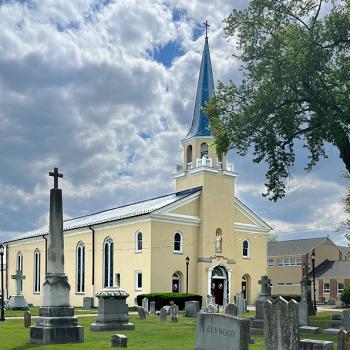“A drastically oversimplified screed masquerading as analysis.” That’s what one commentator called a recent blog I had written about the influx of young men into the neo-calvinist churches. While he could possibly have been kinder in the comment, I agree the post itself did not examine the some of the greater reasons why that type of church is showing such very rapid growth.
I did talk about this several months ago when I wrote a (somewhat) tongue-in-cheek blog about why the UMC is such a dismal failure at church plants. But this is not a joke–and I now offer a better analysis as to why those churches, particularly those part of the Acts 29 Network of church planters, show rapid expansion.
1. No disputes about theology. Everything is laid out and not to be questioned. The core doctrines are simply non-negotiable.
2. Church leadership belongs only to straight, married men. There are no female voices ever in the pulpit, and don’t even start talking about the LGBT community. They are unwelcome. Period. Also, as far as I can tell, no men who have previously been divorced are permitted to serve as a pastor. Clergy wives must be on-board with their planter husbands and are expected to be active participants in the work of the church plants. Furthermore, these church planters are expected to show well-honed entrepreneurial skills and work aggressively toward church growth.
3. Funding: 10% of the proceeds from all the church plants go back to the central network in order to fund more church plants. The minimal bureaucracy funnels very little off. There are no national agencies, clergy pensions or health insurance expenses, bishops and episcopal staffs to be funded, lavish conference offices, concerted action to deal with societal concerns, or organized relief efforts. Seminaries that create these pastors all have independent means of funding themselves.
4. No push for particularly creative worship. There is a planned format and it centers around the preacher. It is all performance-style music, with little congregational response expected.
5. Speaking of preachers, much of the preaching itself revolves around a select few superstars with their sermons broadcast to the various campuses. Campus pastors have the freedom to organize and shepherd small groups and be active evangelists in their local communities. This method frees them from spending countess hours/week in sermon prep.
6. Speaking of clergy time, since the congregations are primarily young at this point, little time needs to be set aside for funerals/memorials/visitation of shut-ins and other complex needs of senior citizens.
7. Speaking further of clergy time: as a non-connectional church, clergy are free from connectional time drains, such as sitting on interminable committees or losing one year out of every four in order to prepare for yet another contentious General Conference where massive amounts of money will be spent but where major decisions will then be reversed by the Judicial Council later.
In many ways, I suspect their very success rests upon John Wesley’s original and highly effective model for spreading the Gospel, although Wesley did require his circuit riders to be unmarried men. Unfortunately, the very nature of the current UMC structure, our more open approach to those we ordain as clergy, and the kind of theology we practice makes it nearly impossible to repeat our own historical success.












